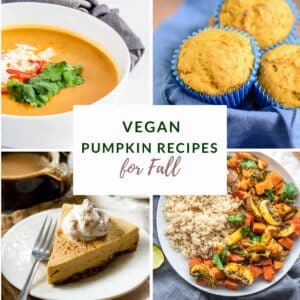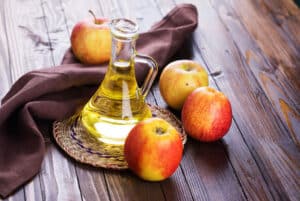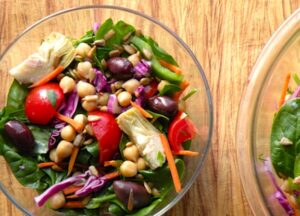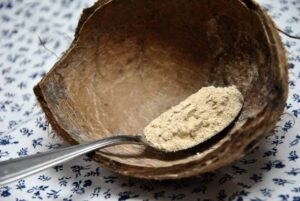Julia B. Greer, MD, MPH, an epidemiologist whose work focuses on pancreatic, ovarian, and breast cancers, contributed this discussion of how to protect yourself from breast cancer with antioxidants.
Antioxidants are substances that may protect cells from damage caused by the unstable molecules known as free radicals. Damaging free radicals can come from many sources: sunlight, carcinogens in cigarette smoke and charred meat, chemicals such as benzene, and the heme iron found in red meat. Free radical damage to cells may lead to DNA damage, which can contribute to cancer risk.
Antioxidants interact with and stabilize free radicals, thereby preventing some of the damage free radicals might cause. Examples of antioxidants include beta-carotene, lycopene, resveratrol, quercetin, anthocyanidin, vitamins C and E, and many other substances.
Fruit and vegetables are especially rich in antioxidants. In a study of 1,551 women with a history of breast cancer, those with the highest plasma levels of carotenoids—a marker of vegetable intake—in their bloodstreams had a 43 percent lower risk of having a new breast cancer than those with the lowest carotenoid levels. Many of the foods in the table above have been specifically associated with a diminished risk of breast cancer.
Folate-Rich Foods
Dietary folate is found in leafy green vegetables such as spinach, collard greens, romaine and Bibb lettuce, arugula, watercress, chard, broccoli rabe, mustard greens, turnip greens, beet greens, endive, chicory, and mache. It is also found in asparagus, turnips, avocadoes, legumes, papayas, corn, broccoli, and peas. Breads, cereals, and pasta are often enriched with folate.
Women have increased needs for folate when they are breastfeeding, and low folate intake in pregnant women has been associated with neural tube defects in their offspring. Folate is involved in the synthesis, repair, and function of DNA, so it is a necessary cofactor for tissues that have rapid turnover and divide often. DNA damage is the root cause of cancer. If you have a varied diet that includes leafy greens as well as commonly fortified foods, it is virtually impossible to become folate deficient.
Legumes
Legumes are all types of beans and peas. Certain foods that aren’t commonly thought of as being in the legume family include peanuts and pistachio nuts. Recipes you will find in this cookbook make use of legumes such as black beans, chickpeas, great northern beans, black-eyed peas, lentils, kidney beans, and edamame (soybeans).
Legumes are low in fat and are high in protein, fiber, potassium, iron, magnesium, folate, and vitamin C. Legumes make a nutritious and hearty meat substitute. Replacing meat with legumes at least once a week lowers your overall consumption of saturated fat and may lower the risk of breast cancer.
The Nurses’ Health Study II, the results of which were published in the International Journal of Cancer, was a large, prospective study of more than 90,000 premenopausal women between the ages of twenty-six and forty-six at the time of enrollment in 1991. The study evaluated dietary flavonols and flavonol-rich-food intake and found that women who ate beans or lentils two or more times per week had a 24 percent lower risk of developing breast cancer than women who ate beans or lentils less than once per month.
Green Tea
Green tea is rich in antioxidants such as tannins, catechins, and epigallocatechin gallate (EGCG), and lab studies have found that it can decrease the development or growth of stomach, prostate, lung, and liver tumors, as well as breast tumors. Some studies have shown that drinking green tea can lower the risk of breast cancer. Previous research in Asian populations noted that women who drank the most green tea had lower rates of primary breast cancer. A separate large study among U.S. women who had been diagnosed and treated for stage I or stage II breast cancer found that those who drank two to four cups of green tea each day lowered their risk of cancer recurrence by 44 percent when compared to women who never drank green tea.
Cruciferous Vegetables
Cruciferous vegetables include broccoli, cauliflower, bok choy, kale, Brussels sprouts, all colors of cabbage, rutabaga, turnips, and arugula. The name crucifer derives from the New Latin for “cross-bearing”; the four petals of the flowers of cruciferous plants resemble a cross. Crucifers are loaded with vitamins and minerals as well as fiber.
In a study of 3,035 women diagnosed with breast cancer who were identified through the Shanghai Cancer Registry and 3,037 closely matched healthy women from the general population, women who ate the most cruciferous vegetables and who also had a genetic variation in a detoxifying enzyme had a more than 50 percent reduction in breast cancer risk compared to women who ate fewer cruciferous vegetables and lacked this same genetic subtype.
Whole Grains
Typical whole grains include whole-wheat, bulgur, oats, barley, couscous, rye, buckwheat, popcorn, kasha, amaranth, spelt, millet, and brown rice. Whole grains are cereal grains that contain the germ, endosperm, and bran, in contrast to refined grains, which retain only the endosperm. The tough, fibrous outer layer called bran protects the inside of the kernel.
The interior contains mostly the starchy endosperm, whose job is to provide stored energy for the germ, the seed’s reproductive kernel, which is nestled inside the endosperm. The germ contains vitamins, minerals, and unsaturated oils. Whole grains are also rich in fiber, plant enzymes, healthy types of fats, and hundreds of other valuable antioxidant phytochemicals.
When you are shopping for grains, you really can’t tell just by looking at them whether the grains are whole. Be sure to read the labels. You can usually identify whole-grain foods by the ingredient list. If “whole-wheat” or “whole meal” is listed as the first ingredient, the item is a whole grain. Note that the label “de-germinated” means the germ has been removed, and “pearled” refers to a polishing process that removes either part or all of the bran and germ.
Nuts
Nuts and seeds such as almonds, walnuts, pecans, hazelnuts, cashews, macadamia nuts, sunflower kernels, pine nuts, and Brazil nuts contain polyphenol antioxidants such as caffeic and ellagic acid, magnesium, selenium, and protein. They are recognized by the FDA as being very low in saturated fat, as well as high in monounsaturated and polyunsaturated fats, and they may help lower LDL cholesterol.
Omega-3 Fatty Acids
Omega-3 fatty acids (also called n-3 fatty acids or omega-3s) are polyunsaturated fatty acids essential for human health. They form cell membranes in our brains and neurons and also assist in the clotting of blood. Omega-3 fatty acids have recently been touted for possessing numerous health benefits, including lowering the risk of heart disease, stroke, autoimmune disorders, and inflammatory bowel disease and potentially decreasing the risk of developing cancer. Some of these beneficial effects come from their anti-inflammatory power and their ability to scavenge free radicals and reactive oxygen species.
To maximize your health, seek to get at least one source of omega-3—walnuts, homemade salad dressing containing an omega-3-rich oil, ground flaxseed meal, or a tablespoon of healthy oil to cook your lunch or dinner in your diet every day. People who follow a vegetarian or vegan diet may need to take a DHA or EPA supplement. Vegetarian versions of these supplements are typically derived from marine algae. A number of antioxidants commonly found in vegetables, such as lycopene and beta-carotene, require the presence of fat to be absorbed. It makes sense to combine vegetables with healthy fats, especially omega-3 fats.
Contributed by Julia B. Greer, MD, MPH, is an epidemiologist whose work focuses on pancreatic, ovarian, and breast cancers. In addtion to being a physician and an accomplished writer, she is presently a faculty member of the University of Pittsburgh Medical Center’s Department of Gastroenterology, Hepatology, and Nutrition. For the full version of this excerpt, plus lots more information on how foods can protect you from breast cancer as well as lots of delicious recipes, see The Anti-Breast Cancer Cookbook.*
--
*This post contains affiliate links. If the product is purchased by linking through this review, VegKitchen receives a modest commission, which helps maintain our site and helps it to continue growing!
- For more tips on plant-based nutrition, make sure to browse VegKitchen’s Nutrition page.
- For lots more features on healthy lifestyle, please explore VegKitchen’s Healthy Vegan Kitchen page.






Mikey Dy says
Thanks for sharing this information. I believe that Soda can be a cause of having cancer since it has a lot of sugar. That's a why a lot of people are becoming victims of cancer and increasing every year. It is quite alarming but people didn't notice that what they are eating and drinking are really bad.
Judy says
Im 68, i have veen diagnosed with HER2 positive, invasive ductal carcinoma, stage 1A!.... tomorrow i meet with oncologist for chemo treatment. I have been reading on holistic foods, and herbs. And suppliments. I grew up with organic gardening. Chickens eggs, fruits and vegetables. Im surprised out of 6 girls. I am the only one that has be diagnosed with this. Any suggestions on healthy drinks or how to do antioxident drinks.
Thank you.